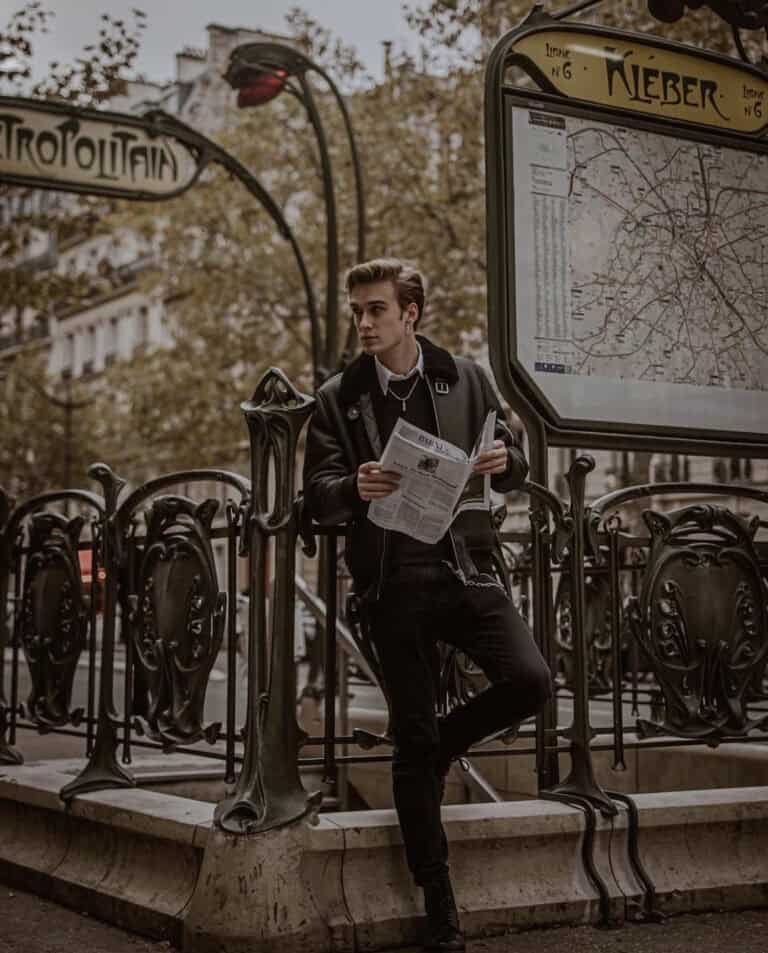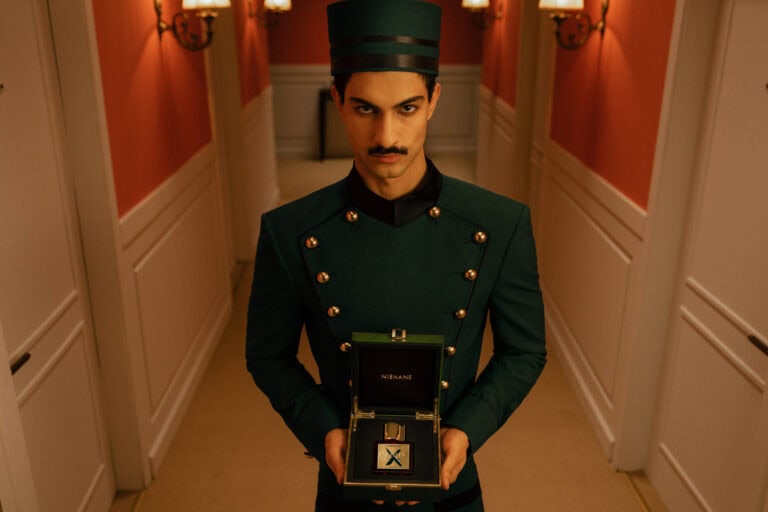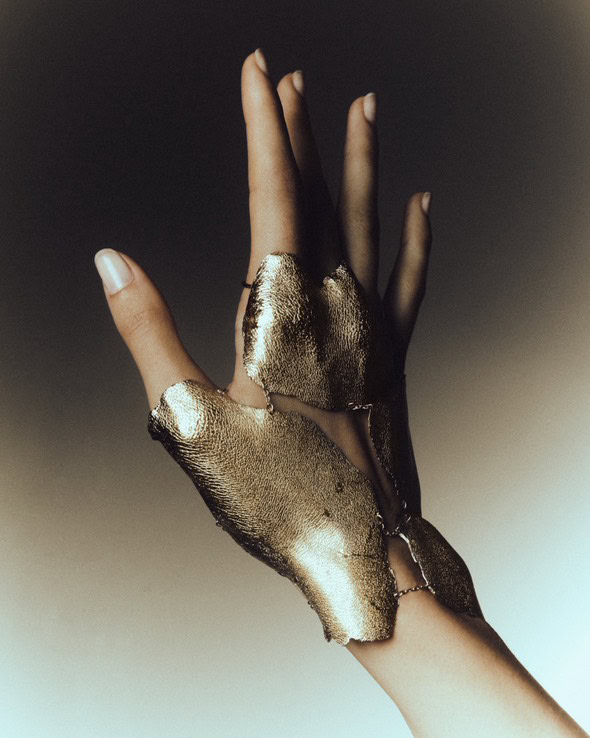
INCARNEM: JEWELS WE EMBODY
Marie Loire Moulin
Incarnem: Jewels We Embody. For Marine Billet, jewelry isn’t a surface thing. Instead, it’s a skin thing, a soul thing. With Incarnem, from in carne, “in the flesh”, the Paris-based artist creates more than objects: she crafts rituals. For example, fragments of the body become relics. Moreover, the overlooked is cast, cherished, made permanent. Each piece is an imprint, of time, of tenderness, of trauma, of love. And while the world spins faster, Incarnem slows down. As a result, her hands preserve what would otherwise disappear. Her jewels don’t just sit on the body, they remember and embrace it. They hold the trace. There no performative minimalism. Instead, Incarnem is instinctive, sculptural, fiercely intimate. Born from an obsession with transformation and trained in architecture. Therefore, to wear Incarnem is not to accessorize. Rather, it is to acknowledge your flesh: raw, flawed, holy. It is to inhabit yourself fully.
IRK: Incarnem, from in carne, “in the flesh”, is an evocative name. What personal meaning does it hold for you, and how did it come to define your creative universe?
Incarnem: For me, wearing jewellery isn’t just about putting it on your body; instead, it’s about embodying it, and having it embody you in return. Because there is a real intimate and carnal relationship between the piece and the body. It’s more than just an accessory, it tells the story of your soul.
IRK: You’ve described your artistic journey as rooted in an “obsession” with transformation. Do you remember the first object you ever reimagined? What drew you to it?
Incarnem: During my jewellery studies, I made a ring using one of my own teeth, a small molar, set in a beautifully worked reliquary. I wanted to make the body precious again, like a gem in a sacred setting. Although I took something banal, even repulsive, I transformed it into something rare.
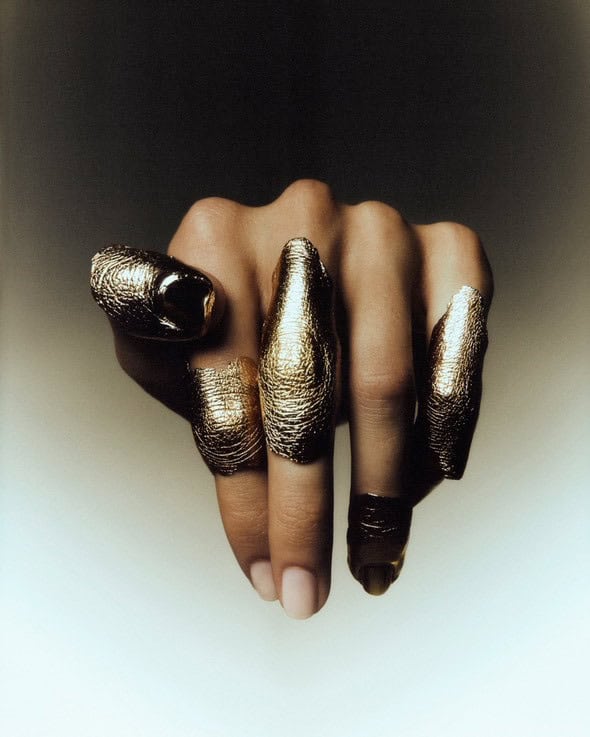
IRK: Your work elevates the banal, the fragments most of us overlook. How do you decide which everyday traces are worth transforming into wearable or sculptural art?
Incarnem: It’s a very subjective thing. When I’m out walking, if I see something I like, I pick it up. Then, I just know it’ll come to life in a future piece. I work instinctively and spontaneously, trusting myself to choose what needs highlighting. In addition, I’m training my eyes to stay sensitive to details that would normally go unnoticed.
IRK: Your process often involves taking imprints, as if preserving a fossilized moment. Can you describe the emotional or symbolic resonance of this technique?
Incarnem: I’m terrified of things disappearing, of time passing. Consequently, casting allows me to freeze and preserve things that would otherwise vanish or change. It’s comforting. It feels like building a personal library of memory and matter.
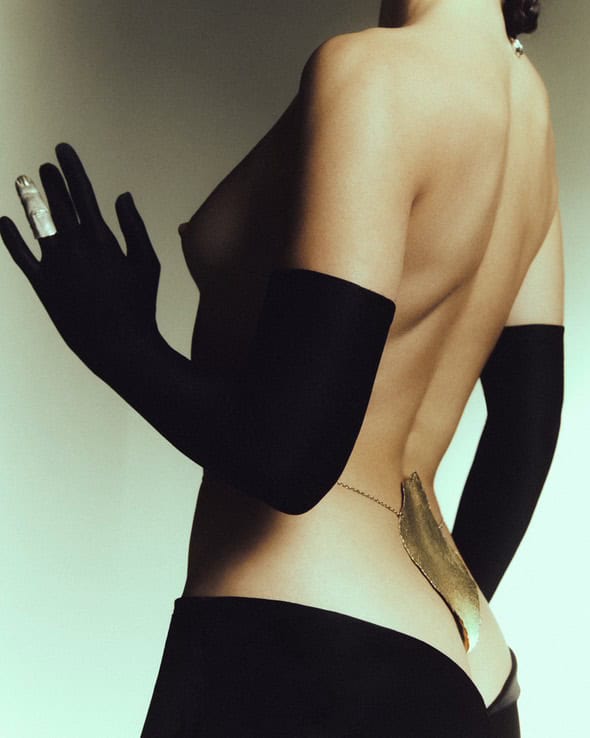
IRK: You call your creations “jewels that we incarnate.” Do you see wearing your work as an act of ritual, transformation, or something else entirely?
Incarnem: I’m not sure I’d call it transformation. Instead, I think people find themselves in the jewelry, they put it on and recognize a part of themselves. So yes, there’s something ritualistic in that, a quiet act of affirmation.
IRK: In a world saturated with mass production, how do you hope someone feels when they wear a one-of-a-kind piece by Incarnem?
Incarnem: I hope they feel joy. The kind that comes from knowing something was made just for them, with care and love, and that no one else owns the same piece. Moreover, I always keep in touch with my clients, walking them through each stage of the creation process. That relationship is part of the work.
IRK: Your practice has expanded from jewellery into sculpture. How has this shift changed your relationship with form, space, and the human body?
Incarnem: I’ve always had a sculptural approach to jewellery. I come from architecture, so for me the shift isn’t so drastic. The pieces are just larger now, and harder to store!
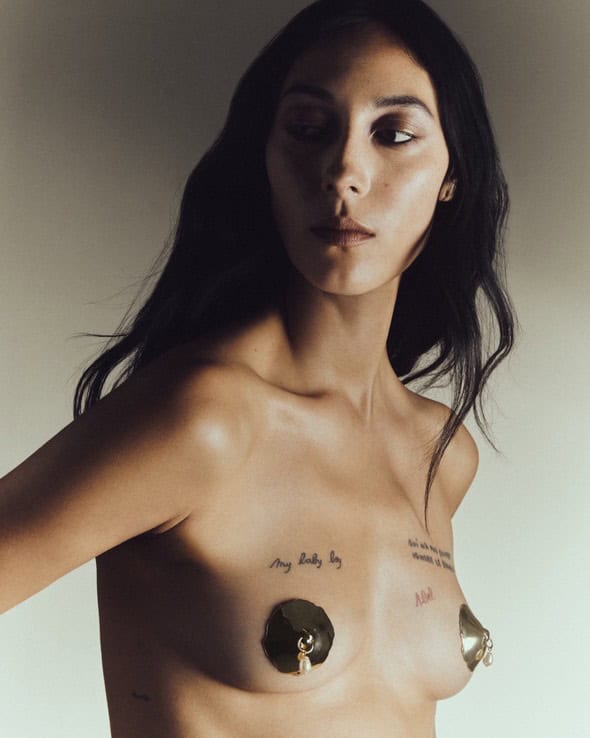
IRK: Much of your work is bespoke. What have you discovered about others, and perhaps yourself, through the intimate process of designing for individual bodies and stories?
Incarnem: Moulding is an incredibly intimate moment. People open up about their stories, their scars, their joys. As a result, I’ve heard powerful testimonies about love and loathing for one’s body. I’m there to support and reassure, and often, those clients become friends.
IRK: Where do you envision Incarnem heading next, deeper into the intimacy of the body, or further into sculptural and spatial exploration?
Incarnem: I think I’ll explore sculpture more deeply. I’d love to develop larger pieces and show them in galleries. In addition, I’m also drawn to the world of tableware. I’m curious and multi-disciplinary by nature.
IRK: Where can people experience Incarnem in person or acquire a piece of your world?
Incarnem: They can order directly from my website, including bespoke pieces. However, if they want guidance, they can message me on Instagram or by email. I love talking with people, it’s part of the process.
There’s nothing ornamental about Incarnem. Incarnem are jewels we embody. These aren’t adornments, they’re declarations. Of presence, of softness. Of having a body that remembers, that resists disappearance. In an age of smooth surfaces and disembodied trends, Marine Billet sculpts friction, texture, trace. For example, her pieces carry breath. They carry blood. They carry stories you can’t always tell, but you still wear. To choose Incarnem is to say: I am here. This is my form. My history, my joy, my scar. And I deserve to be cast in care, not in gold, but in truth.
Did you enjoy INCARNEM: JEWELS WE EMBODY? In our feature on Anthology Paris, footwear is no longer just functional, it becomes timeless, tactile, intentional.
Share this post
Marie Loire Moulin approaches fashion as an immersive language—one that expresses identity, character, and cultural influence. Echoing Jean Cocteau’s observation that “Fashion is what goes out of fashion,” Moulin embraces the paradox at the heart of her craft. For her, fashion is a living, breathing art form—constantly deconstructed, reimagined, and reshaped in response to the world around it.
What fuels Marie Loire’s creativity is the ability to blend worlds—to explore the intersections of fashion, technology, history, and art. She is inspired by how these disciplines collide to generate experiences that are not only visually compelling, but also deeply purposeful.
Moulin is particularly drawn to artistic expressions that serve as bridges—linking cultures, fusing tradition with innovation. Sustainability, for her, is not a buzzword but a foundation. She sees it as a long-term commitment to thoughtful creation, not a passing aesthetic.
As a stylist working with actors on film sets, Marie Loire thrives on transforming a director’s vision into living, breathing characters. Through wardrobe and silhouette, she builds atmospheres that tell stories—stories of emotion, intention, and presence.
Her creative drive extends into virtual reality and immersive art, where she explores how emerging technologies can shift perception and spark connection across cultural boundaries. For Moulin, the digital realm is just another canvas—one that, when used with care, has the potential to resonate as powerfully as the physical world.
Whether on set or in virtual space, Marie Loire seeks originality and depth. Her work is marked by richly layered references, a reverence for detail, and a belief that fashion—at its best—can speak not just to the eye, but to the mind.
Read Next


